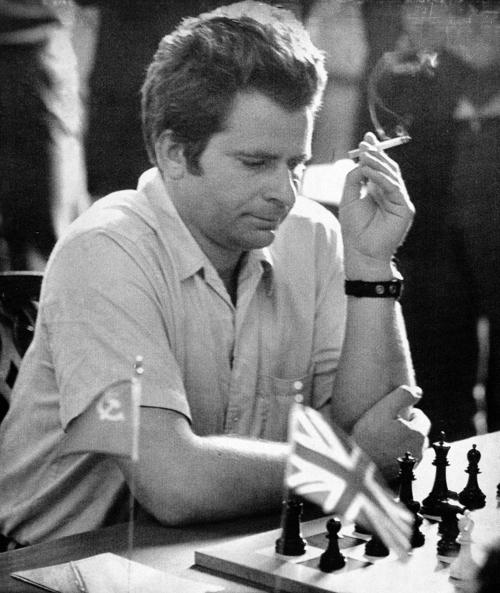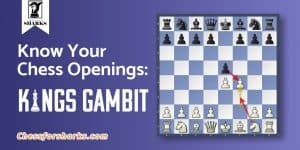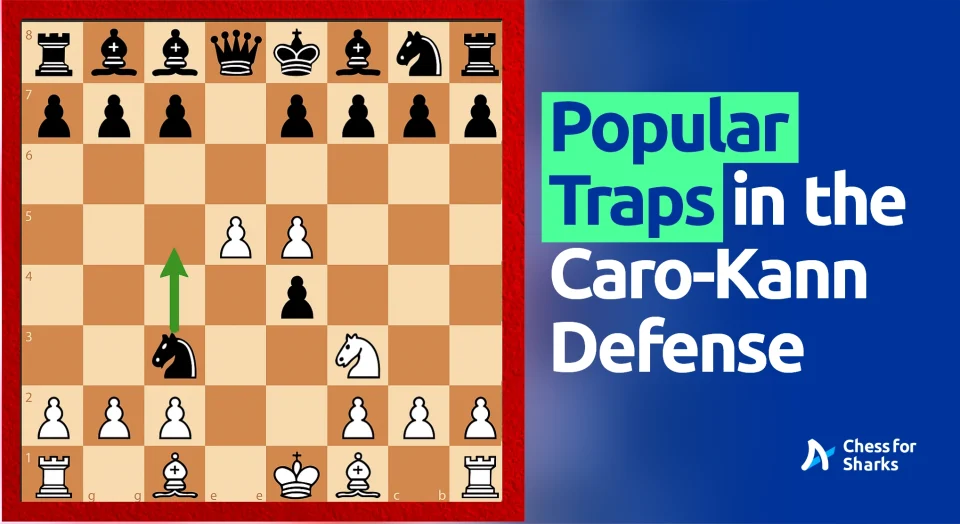So we all know about The Queen’s Gambit—huge thanks to the hit Netflix miniseries. But what about that of the King? King’s Gambit is a movie that talks about a man who possesses a journal with the ability to alter world events. Now, that’s some brilliant Sci-Fi right there, and if you haven’t seen the movie, then you owe me a “thank you” for the recommendation. You’re welcome! We won’t be talking much about the movie though. Instead, our focus will be on the actual opening. Look alive, e4 players! Since Queen’s Gambit is for d4 players, this one is for you!.
The King’s Gambit is like a mirrored image—a lateral inversion of The Queen’s Gambit. When White opens the game with 1.e4, Black responds with the typical 1…e5. What follows is an arsenic pawn gift with 2.f4. The essence of this move is to deflect Black’s e pawn from the center file and either exert dominance on the center with d4 or develop the Kingside to prepare for an attack on the opponent’s kingside.

There are many variations and sub-variations of the King’s Gambit. The classification of these variations depends on if the gambit is accepted or declined.
King’s Gambit Accepted (KGA)
1.e4 e5
2.f4 exf4

These are the opening moves for the Accepted line of the King’s Gambit. The main variations of the King’s Gambit Accepted are also gambits which include:
King’s Knight’s Gambit
Playing the 3.Nf3 is one of the most common replies to the King’s Gambit Accepted.

The Knight on f3 is a prophylactic move that prevents any funny surprises like 3…Qh4+—a move that puts White in deep trouble. White can hope for Black to make attempts to defend the f4 pawn. This way, several attacks can be unleashed on selfish Black who has refused to return what is not his. The King’s Knight Gambit has two main variations namely;
Classical Variation
Modern Defense
Classical Variation

Firstly, we look at Black’s attempt to hold on to this f4 pawn as we hoped. Black plays 3…g5 to defend e4. There’s also the likeliness of 4…g4 to scare away the f3 knight and finally expose the h4 square for the queen to deliver a strong check. In response to 3…g5, either the Quaade Gambit (4.Nc3) or the Kieseritzky Gambit (4.h4) are recommended moves if White craves an open and highly attacking game. The Muzio Gambit (4.Bc4 g4) which is a line that is extremely attacking for White is detrimental for the sacrificing side. The Kieseritzky Gambit is arguably the best line from the Classical Variation. Boris Spassky iconically used it to best the creative legend, Bobby Fischer in 1960.
Modern Defense

Choosing to play this Variation of the King’s Knight Gambit can end up more favorable for White rather than Black. Modern Defense’s 3…d5 aims to neutralize the center, following White’s deflection of the central e5 pawn to f4. The Modern Defense backfires when White accepts the exchange invitation at the center, and Black helps propel the development of White’s b1 knight and f1 bishop. After the queen recaptures with 4…Qxf5, 5.Nc3 is likely to follow—threatening the d5 queen. Whatever the queen plays afterward will develop the f1 bishop.
The King’s Knight’s Gambit can also present lines like the MacLeod Defense and Wagenbach Defense.
Bishop’s Gambit

This is a major alternative to the King’s Knight Gambit of the King’s Gambit Accepted. By playing 3.Bc4, White practically invites Black to grab the queen check on h4. Losing the right to castle is traded for a front foot in development, and Black now prepares for 5.Nf3 to scare away the White queen if she’s still camped on c4. If she moved away earlier, then Black has lost tempo.
Asides from Bishop’s Gambit and the King’s Knight Gambit, there are more ways to surprise your opponent using the Gama Gambit (3.g3), Steinitz Gambit (3.d4) among others. And if you’re one with a high affinity for craziness, then you can give The Tumbleweed(3.Kf2) a try. Please don’t play The Tumbleweed in a tournament. Thanks.
King’s Gambit Declined (KGD)
Now, what happens if your opponent doesn’t take the bait and decides to ignore your pawn seduction? Unlike the King’s Gambit Accepted, there aren’t many lines that follow the King’s Gambit Declined. The two major lines are:
Falkbeer countergambit

After 1.e4 e5 2.f4, Black responds with a gambit of his own with 2…d5. The usual continuation is White accepting Black’s gambit and then playing e5-e4 to cause central problems for White. In contrast to what Black thinks, advancing the e pawn causes no real threat, because it can be easily neutralized with 4.d3. Another reply by Black when White accepts the countergambit could be c6. 3…c6 is a move that helps Black with quicker development at the expense of relinquishing pawn advantage and structure to White. This advantage can be costly in the end game.
Classical defense

This variation of the KGD focuses on attacking the kingside squares exposed by the King’s Gambit. White can spend two moves to ease the pressure on the kingside from the bishop. A knight move to c3, and then a4 forces the bishop to either be exchanged or relocated to a diagonal where it can no longer cause trouble to the kingside. White must be careful not to respond to 2…Bc5 with 3.fxe5, lest falling into a beginner’s trap.
Successful Deployments
Boris Spassky Vs Bobby Fischer 1-0, Mar del Plata, 1960

We already made mention of this brilliant game by Boris Spassky. It would only be fair to go into a bit more detail. Fischer accepted Boris’s gambit and went with the Classical Variation afterward. By move 13, Spassky had two Bishops sweetly developed on the 4th rank with a begging semi-open g file to explore. After 29.Re4, the pressure became overwhelming for Fischer after it became certain he would lose a piece. He resigned from the position.
Nigel Short Vs Garry Kasparov 1-0, Exhibition game, 1993

Former World Champion Garry Kasparov doesn’t lose to many players, but in this game, he slipped epically. English Grandmaster Nigel Short took no time to show Garry Kasparov how effective the Bishop’s Gambit of the KGA can be. White seemed to be in a bad position, but exemplary coordination of pieces completely flipped the game in Nigel’s favor, and Kasparov resigned at just move 15.
If you’re adventurous and never afraid to take risks when playing White, the King’s Gambit is a great option for you. Give it a try, come back, and let us know how well it worked for you!







join the conversation